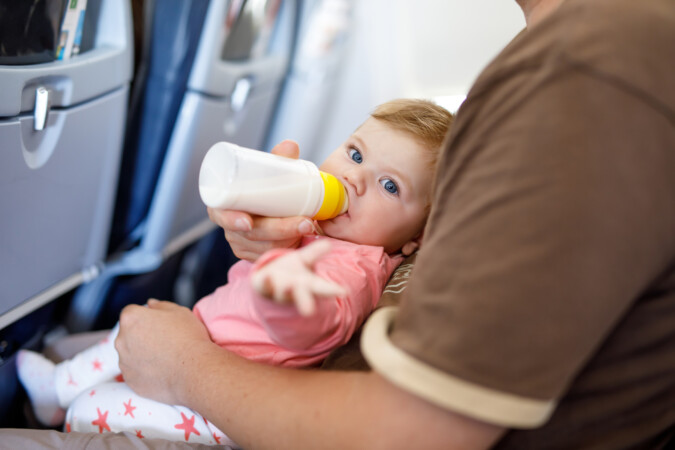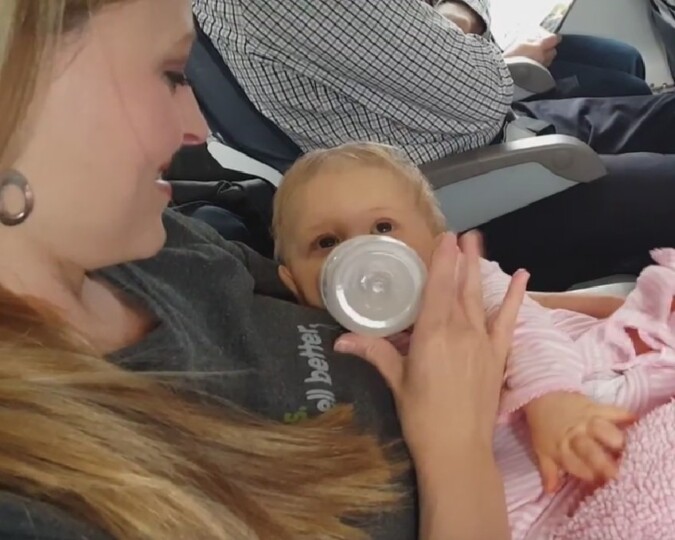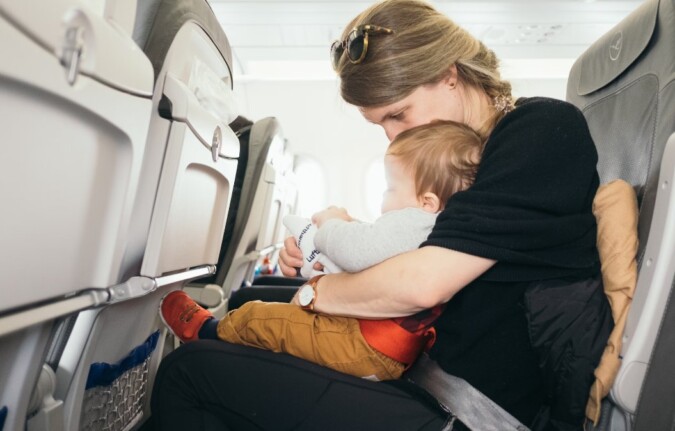Traveling with a baby can feel like an Olympic event: there’s careful planning, strategic packing, and overcoming hurdles along the way. One of the biggest challenges for parents is ensuring their little one stays nourished and comfortable, especially on long flights or in unfamiliar environments.
Whether you’re breastfeeding, bottle-feeding, or combining both, here’s how to prepare for a smoother journey with your baby.
Navigating Feeding Challenges While Traveling

Breastfeeding is often a go-to choice for parents due to its convenience and health benefits. However, many families face hurdles in continuing breastfeeding over time, let alone while traveling.
According to the CDC’s latest Breastfeeding Report Card, 83.2% of U.S. babies start out receiving some breast milk. By 6 months, however, only 24.9% are exclusively breastfed. These declines often reflect challenges like returning to work, supply issues, or logistical barriers like traveling.
Thinking About Using Infant Formula as an Alternative? Here’s What You Need to Know
For many parents, infant formula is a practical alternative while traveling. It’s especially helpful when breastfeeding isn’t feasible or carrying enough expressed milk isn’t possible.
Formula’s convenience can be a lifesaver during long flights or in destinations where access to breastfeeding-friendly spaces is limited. However, it’s crucial to make well-informed decisions when choosing a formula.
According to TorHoerman law, in recent years, popular brands like Enfamil and Similac have faced significant scrutiny. Their formulas have been linked to cases of necrotizing enterocolitis (NEC), a severe intestinal condition that primarily affects premature babies.
Tragically, some families have reported losing their infants after using these formulas. These allegations have led to widespread legal action, with affected parents pursuing justice through the NEC baby formula lawsuit.
Parents claim that the companies knowingly marketed their cow’s milk-based formulas as safe alternatives. This was despite evidence linking these products to an increased risk of necrotizing enterocolitis (NEC).
While formulas can offer convenience, these concerns highlight the importance of exploring safer feeding alternatives and staying informed about potential risks.
What causes NEC?
The precise cause of NEC remains unclear, but it is thought to be linked to an underdeveloped digestive system, infections, and certain feeding methods. Premature infants, particularly those born before 32 weeks, face an increased risk due to their immature intestines. Additional factors that may contribute include formula feeding, stress, and reduced blood circulation to the intestines.
The Convenience and Safety of Bringing Expressed Milk While Traveling
When traveling with a baby, bringing expressed breast milk ensures they have familiar, safe nutrition. Not only does expressed milk offer all the benefits of breastfeeding, but it also avoids the potential risks associated with formula.
The good news is that the CDC provides helpful guidance for parents traveling with expressed milk. According to their recommendations, expressed milk and related feeding items are exempt from TSA’s liquid restrictions. This means you can bring as much expressed milk as needed, along with ice packs and gel packs. You can also bring pumps or pump kits required to transport it through airport security.
When you arrive at the TSA checkpoint, inform the officer that you’re carrying expressed milk. Be sure to separate it from other liquids and gels, which are limited to 3.4 oz (100 mL). This exception allows for a smoother travel experience, ensuring your baby has access to familiar nutrition no matter where your journey takes you.
What does the Friendly Airports for Mothers (FAM) Act entail?
The Friendly Airports for Mothers (FAM) Act is U.S. legislation that requires small, medium, and large hub airports to provide designated lactation rooms. These rooms must be clean, private, and equipped for breastfeeding mothers. The aim is to make air travel more accessible and supportive for nursing mothers.
Comfort During Flights: Easing Ear Pressure

Flying can be particularly uncomfortable for babies, especially during takeoff and landing when the rapid changes in air pressure can cause painful ear pressure. To ease this discomfort, it’s helpful to breastfeed or bottle-feed your baby during these critical times.
Sucking and swallowing helps to naturally equalize ear pressure, which can significantly reduce pain and distress. If breastfeeding or bottle-feeding isn’t an option, offering a pacifier can provide similar benefits by mimicking the soothing effects of sucking.
Additionally, aligning your baby’s feeding schedule with flight times can help ensure they’re calm and well-fed during takeoff and landing. A well-fed baby is less likely to feel uncomfortable or fussy, helping to keep them settled during the flight.
How does sucking and swallowing benefit babies specifically?
Babies are particularly vulnerable to ear pressure discomfort because their Eustachian tubes are narrower and more horizontal than adults. The action of sucking and swallowing helps open the Eustachian tubes, allowing pressure to equalize. This is why feeding during takeoff and landing is so effective in preventing ear pain.
Keep Your Baby Comfortable and Healthy

A comfortable baby is a happy traveler, and comfort starts with preparation. Dress your baby in easy-to-layer clothing to accommodate changing temperatures, pack their favorite comfort items, and plan their naps around travel schedules.
For their health, ensure you have a small first aid kit, including fever reducers, a thermometer, and any prescribed medications. Use bottled or pre-boiled water if you’re unsure of local water safety.
Lastly, stay informed about feeding safety. Research feeding practices in your destination country and consult your pediatrician before introducing new options.
Overall, traveling overseas with a baby doesn’t have to be stressful. With a little preparation and the right tools, you can enjoy the adventure while keeping your little one happy and nourished. From navigating TSA regulations to exploring feeding alternatives like expressed milk, every thoughtful step you take ensures a smoother journey for your family.




